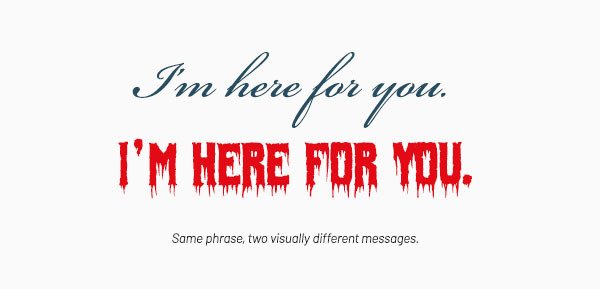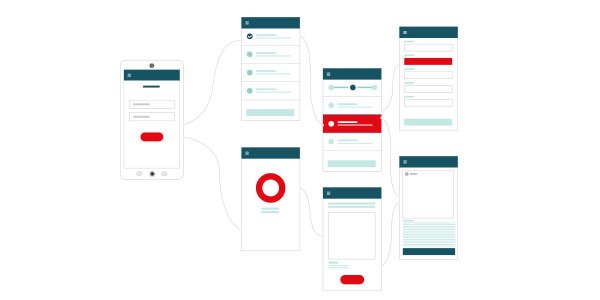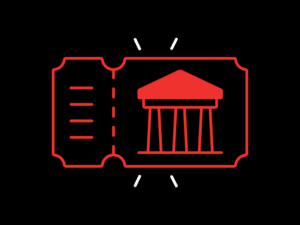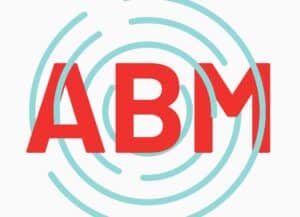When the word “design” comes to mind, many people don’t consider its close relationship to human habits. Often, designers are compared to artists who use their abilities to create beautiful visuals. But design is so much more than just aesthetics. It is crafted with intention and purpose to catch your attention and evoke something. Or, in the case of the marketing world, do something.
Psychology, on the other hand, is the scientific study of human behavior and the mind: why people do things, what motivates someone, and what shapes the way they think.
Designers actually rely on these key insights about human behavior and how people consume information to direct their choices on every aspect of design—from which color scheme to use in an advertisement to the connection between layout and information on a web page.
So, what have scientists taught designers? And how can you apply these lessons to make the most of your marketing?
Lesson #1: Color and Shape Theory
People associate colors and shapes with qualities.

Even without knowing anything about art, there are inferred associations that have come to be widely accepted. For example, the way that colors evoke emotion —how the warmer hues of red and orange evoke energy and passion, while cooler tones are associated with nature and stability.
The same goes for shapes and typefaces. More rounded shapes indicate youth, nature, and modern style, while more rigid ones can indicate something more stable or traditional.
How to Apply It: Don’t pick a color or font simply because you like it. Your customers are looking for something that matches your product or service. Think about what words you want to associate with your brand. Do you want your brand to be viewed as innovative? Modern? Traditional? Your values should be reflected in these design choices.
Lesson #2: Hick’s Law
People are overwhelmed by too many choices.

Hick’s Law states that decision-making time increases with complexity. In other words, bombarding people with information, prompts, and calls to action is not the way to get their attention. It actually does the opposite.
Consider, for a moment, a universal remote. As TVs became more powerful, simple remotes that just control channels and volume expanded to include other types of programming, which largely went unused.
In theory, it’s nice to have all of that power at one’s fingertips. But oftentimes, a user would end up spending their time trying to figure out how to use the remote and possibly miss an important part of their viewing experience.
Likewise, too many focal points in your design could wind up turning into white noise for the audience—meaning your message and calls to action may go largely unnoticed.
How to Apply It: Pare functions down to allow your customers to focus on what you want them to do or understand. Sure, people like options, but keep your eyes on the prize: that conversion!
Lesson #3: Jakob’s Law of the Internet User Experience
People like familiarity.

The formalization of this idea came about in 2000 by Jakob Nielson, a usability expert. Jakob’s Law states that we prefer things that are familiar to us. In essence, your customers spend a ton of time on other sites and using other products, so they will expect yours to provide a similar experience.
This isn’t to say that you have to copy others in your industry to help users feel comfortable. However, there is a reason that there is consistency in placement of information such as the menu of a webpage or contact options in the footer of a site.
If prospects are able to spend less time learning your site or design, the more they can focus on what you can offer them. Designing with familiarity in mind ensures that potential customers are sufficiently prepared to achieve the goal set forth for them. The design sets them up for success!
How to Apply It: Research what others are doing in your field and determine what works and what can be improved upon. If you have data, pay close attention to metrics and listen to feedback from your customers on how your site or product is being used.
Lesson #4: Gestalt Principals
People are programmed to make visual connections.

The whole is greater than the sum of its parts. Gestalt principles are built on how elements are perceived in relation to each other. Or just simply: It’s a dog because your brain is telling you it’s a dog. This is just a bunch of black dots placed in a manner to help your brain make that specific connection.
The brain is an amazing thing when it comes to processing information and makes natural connections based on visual cues. The way things are grouped together inform the viewer on what belongs together. These principles come in handy when organizing a lot of information in a way that needs to be easy to consume.
For example, by placing an image and text in close proximity, the brain links the two as belonging together. If the text was further away, the brain would register it as a separate element. By understanding what connections the brain is built to make, designers can help bridge the gap between information and visual hierarchy to help customers consume that content.
How to Apply It: Gather your information and decide how to organize it. Rely on hierarchy and design systems to help communicate in a meaningful way. Review metrics and evolve. After all, the best way to improve your customer acquisition efforts is to listen to the customers who have already been through the process.
Lesson #5: Microinteractions in User Experience
People want to be engaged.

Brand experiences are evolving to make customers feel like part of the process. Whether it’s adding a conversational tone to their website or utilizing trigger feedback via microinteractions , these experiences can help users feel like they are progressing and participating.
One simple example is a button on a website. What makes you want to engage with it? What makes you understand that you’ve interacted with it? Is the copy compelling? Offering compelling copy and gentle feedback on a user’s actions can help increase conversions exponentially.
How to Apply It: Evaluate your calls to action. Could they be more compelling? Are they clear? If you need a user to engage, how can you tell them if what they are doing is successful or not? Utilize different states to give feedback on errors, clicks, and more.
So, what does all of this mean?
The more designers know about what drives a person to action, the greater their ability to either enhance an experience or manipulate it. There is a lot of time (and money) spent on researching what keeps people engaged, but you must remember what is right for your brand and your customers. Designers should concentrate on improving usability and creating more intuitive experiences that always keep your brand’s goals in mind.
Want to learn more about our design services? Reach out to us today.








